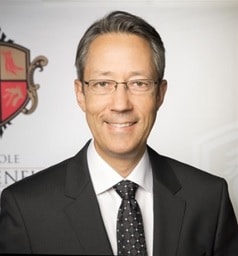A new edition for BIFMA HCF8.1
BIFMA recently issued a new edition for BIFMA HCF8.1 – Health Care Furniture Design For Cleanability. This is the third version of that standard. Other that a few editorial changes and clarifications, the major technically significant changes were with section 7: “Assessing Coated Fabrics for Resistance to Liquid Cleaners and/or Disinfectants” where the cycle number went from 14 to 5; and Section 10 – Assessing Woven Fabrics for Resistance to Liquid Cleaners and/or Disinfectants – which was added to the document.
This document is a guideline, not a standard. It should therefore be taken as such and cannot really be used for compliance purposes as this test protocol in many respects lacks the details required for a test lab to run a test accurately. For example, in section 6, different cleaners are specified to evaluate the surface resistance to cleaners. One of the cleaners is Hydrogen Peroxide (HP). Various types of HP solutions can be used for testing a surface including an acid activated version. These different solutions will attack surfaces to various degrees depending on their actual compositions and concentrations (none of those parameters are specified).
Another example is section 9 – Resistance of furniture to UV light. That section was created to assess material resistance to the UV light used by disinfection equipment which bombards surfaces with UVc light. As a reference, below is the sun emission spectrum (Source: Q-LAB, Technical Bulletin LU-0822) where you see the separation between Visible light, UV-a, UV-b and the UV-c regions.

BIFMA HCF 8.1, section 9.3.1, recommends using a germicidal light source capable of providing radiant energy in the spectral UV-c wavelength region (200-280nm) with a majority or radiation at 254 nm. Below is a typical emission spectra for a commercially available UV-c germicidal lamp that matches the 9.3.1 requirement (note the 254 nm peak):

BIFMA HCF 8.1, section 9.1 states “An alternate to this test is to subject the samples to 40 hours of ASTM G155 …cycle 11”. Below is the xenon arc spectrum corresponding to this “alternate test method”; there is no UV light emitted below 300 nm. Our contention is that using a xenon arc light source would yield extremely different results than those of a UV-c lamp. Our recommendation, if you are truly concerned about how your material will behave under UV-c disinfection: find a lab that can do the right test. In the case of the resistance of furniture to UV light, Xenon is not an appropriate alternative.

Micom offers furniture and coating testing services for a wide selection of material and products. For more information about BIFMA HCF 8.1, do not hesitate to get in touch with our experts.
Disclaimer
All of the information and opinions contained in this blog are made with the information, and the understanding that we have reviewed at the time of publishing. However, despite our efforts, we do not offer any guarantee of their accuracy, thoroughness of our investigation or validity. The author of this blog is not liable for any inaccuracies or any losses or damages that may result from the use of the information or data contained herein. This blog has not been reviewed or verified for its accuracy by any peer group associates prior to publication.


